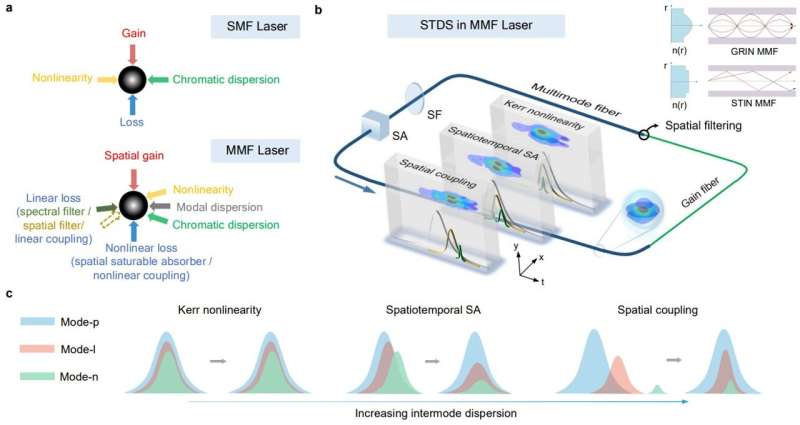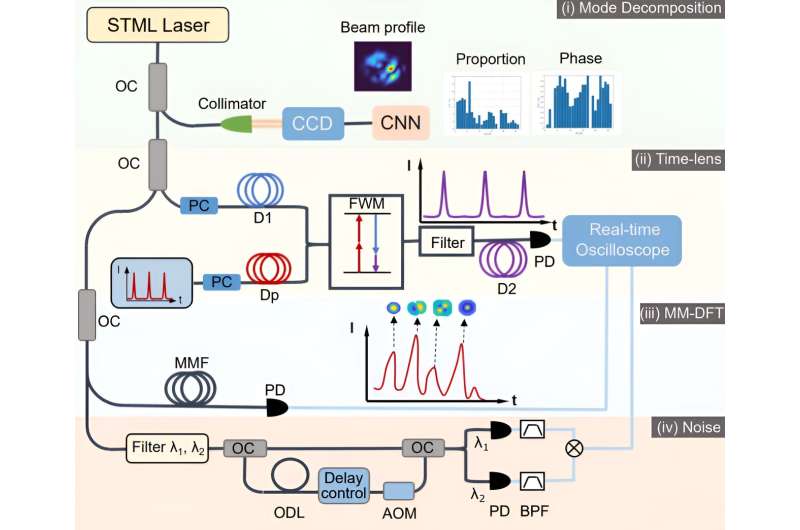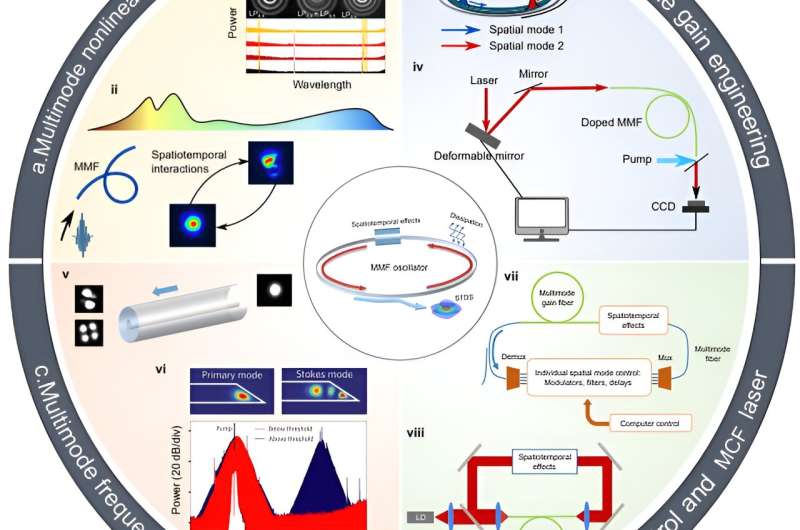This article has been reviewed according to Science X's editorial process and policies. Editors have highlighted the following attributes while ensuring the content's credibility:
fact-checked
peer-reviewed publication
proofread
Spatiotemporal mode-locking and dissipative solitons in multimode fiber lasers

The birth of spatiotemporal mode-locking (STML) can date back to the report of Wright and colleagues in 2017. Following this breakthrough, research on STML has thrived. However, our comprehension and control of spatiotemporal dissipative solitons (STDSs) and STML in multi-mode fiber (MMF) lasers are not as mature as those in single-mode fiber lasers.
Some of the key challenges include achieving ultrahigh pulse energy and arbitrary mode profiles in MMF lasers and refining spatiotemporal characterization techniques. Tackling these challenges would unlock diverse applications for MMF lasers.
Recently, a review article entitled "Spatiotemporal mode-locking and dissipative solitons in multimode fiber lasers" was published in Light: Science & Applications by the team led by Changxi Yang and Chengying Bao from Tsinghua University, China. This review summarizes the research progress on STML and STDS in MMF lasers and outlines several perspectives that may bring breakthroughs for STML lasers.
Balancing intermode dispersion and synchronizing mode-resolved pulses are a prerequisite for STML. Depending on the magnitude of intermodal dispersion, three dominant mechanisms contributing to balancing intermode dispersion and govern STML: Kerr nonlinear dominant regime, spatiotemporal saturable absorber dominant regime, and spatial coupling dominant regime (Fig. 1b).
Each regime exhibits distinct dynamics for the three-dimensional pulses. These STDSs differ from conventional ones with fixed pulse shapes due to the complex spatiotemporal coupling nature affecting their temporal, spectral, and spatial characteristics (Fig. 1c).

Multi-dimension measurement techniques and nonlinear dynamics
Measurement is vital for understanding STDS behaviors. Presently, spectral filtering and spatial sampling can hardly capture the full dynamics of STDSs and hinders our ability to control STML lasers. Real-time, multi-dimensional optical field measurements are crucial to grasp spatiotemporal dynamics.
Combining techniques like multimode dispersion Fourier transform, time lenses, mode decomposition, and timing jitter measurements may make a powerful system to characterize spatiotemporal dynamics of STDSs (Fig. 2). With full characterization of STDSs in spatial, temporal, and spectral dimensions, more exotic nonlinear dynamics can be captured and STML dynamics can be revealed.

Mode engineering and energy scaling
Mode field control and wavefront shaping have versatile applications. However, customizing mode components in multimode lasers remains challenging. Beam self-cleaning, or introducing spatial light modulators may enable mode field control of STML lasers. Attaining high pulse energy with user-defined mode profile can open the door for many exciting applications including nonlinear microscopy. Moreover, spatial coherence may add new possibilities for applications (e.g., chaotic Lidar) where low coherence can be an advantage.
This section of the article covers the applications and novel technological pathways of spatiotemporal mode-locked lasers (Fig. 3). Topics include multimode optical frequency combs, wavelength-division multiplexing for multimode lasers, generation of multimode supercontinuum, mode-locked single-cavity dual/multi-combs, and coherently-pumped multimode lasers. These advances can push our ability to control photons in loosely confined, multi-mode, nonlinear, ultrafast systems to a new level.
More information: Bo Cao et al, Spatiotemporal mode-locking and dissipative solitons in multimode fiber lasers, Light: Science & Applications (2023). DOI: 10.1038/s41377-023-01305-0
Journal information: Light: Science & Applications
Provided by TranSpread




















